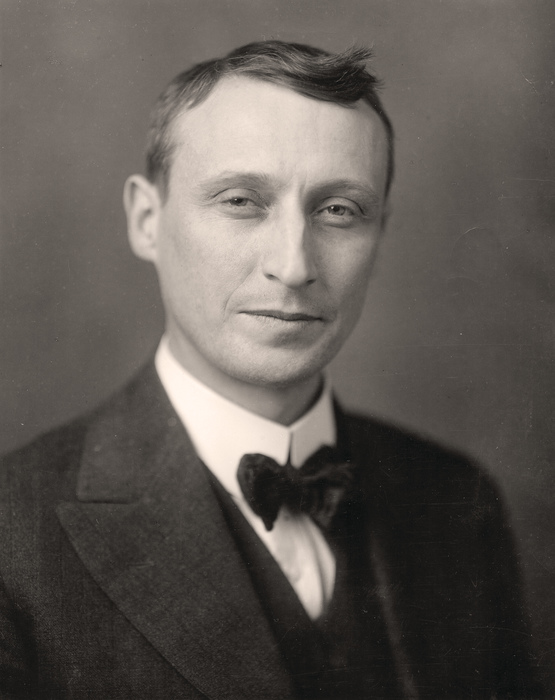Perley G. Nutting

The idea to form an optical society originated with Rochester-based optical scientist Perley G. Nutting, who was elected the first president of OSA in 1916. Nutting spent his undergraduate years at Stanford University, U.S.. He went on to obtain a master’s degree from the University of California. He then spent time in Germany before attending Cornell University to work on his doctorate.
In 1903, Nutting joined the National Bureau of Standards (NBS), where he remained until 1912. He worked in the Optics Division under Samuel W. Stratton, the director of NBS. Between 1903 and 1912, the Bureau produced several circulars on optical instruments and the optical properties of materials. Nutting published a few items in the journal Science.
During his time at NBS Nutting constructed a neon sign, that many believe was the first ever, though this was a matter of dispute. The sign had four glass tubes of neon, forming the letters NEON; they were displayed at the “Palace of Electricity” at the Louisiana Purchase Exhibition in 1904—15 years before neon signs were available commercially.
In 1912, while still at NBS, Nutting published a book called Outlines of Applied Optics. Around 1910, Nutting had made an effort to organize a professional optical society, but nothing materialized. That same year, Nutting and his assistant Loyd A. Jones (who went on to become OSA’s president in 1930) both left NBS and joined the new Research Laboratory of the Eastman Kodak Company in Rochester, NY. In 1915, Nutting revived his plan to form an optical society, and this time it took hold.
Nine Rochester scientists met on 18 November 1915; four from Eastman Kodak Company; four from Bausch & Lomb, and one from the university. They met again a week later, and again on December 7, when they formed the Rochester Association for the Advancement of Applied Optics, adopted a constitution, and elected a slate of officers. Nutting was elected president; Herman Keller, vice president; Adolph Lomb, treasurer; and F.E. Ross, corresponding secretary. On 4 January 1916, they held the first of several monthly meetings. Attendance averaged about 40.
In 1917, Nutting left Kodak to become director of research for Westinghouse in Pittsburgh. He remained active in optics for the next decade, and published 17 articles in JOSA. He was still on the Council in 1924, but his interest gradually shifted to physical chemistry and geophysics. From 1924 until his retirement in 1943, he was a geophysicist with the Geological Survey. His JOSA articles described dispersion formulas for optical glass, photometry, incandescent lamps and a portable seismometer.
Perley G. Nutting died in 1949.
Document Created: 26 Jul 2023
Last Updated: 28 Aug 2023
